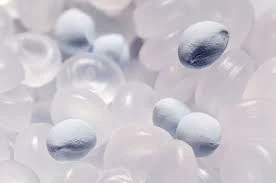Understanding Chemical Softening of Water
Water is an essential resource for human life, used not only for drinking but also for agriculture, industry, and recreation. However, the presence of hard minerals, particularly calcium and magnesium, in water can create several challenges. Hard water can lead to scale buildup in pipes, reduce the effectiveness of soaps and detergents, and negatively impact industrial processes and appliances. To combat these challenges, one effective solution is the chemical softening of water.
What is Chemical Softening of Water?
Chemical softening is a process that aims to reduce the hardness of water by removing calcium, magnesium, and other metal ions. This treatment is particularly crucial in areas where the water supply is naturally hard, often sourced from underground aquifers or surface water that has interacted with minerals. The primary methods for chemical softening involve the addition of certain chemicals that precipitate the hardness ions out of the water.
Methods of Chemical Softening
1. Lime Softening One of the most common methods is lime softening. In this process, quicklime (calcium oxide) or slaked lime (calcium hydroxide) is added to hard water. This addition reacts with the hardness ions to form insoluble precipitates, which can then be removed through sedimentation or filtration. Lime softening is particularly effective for water with high levels of hardness and is widely used in municipal water treatment facilities.
2. Soda Ash Treatment Another method is the addition of soda ash (sodium carbonate), which also precipitates calcium and magnesium ions as insoluble forms. This method is particularly useful in treating water that contains high levels of hardness but lower pH. Soda ash can help achieve a higher degree of softening than lime alone.
chemical softening of water

3. Ion Exchange Ion exchange is another advanced technique used for softening water. In this process, hard water is passed through a resin that exchanges sodium ions for calcium and magnesium ions. This method provides a highly efficient means of softening water and is commonly used in residential water softeners. While effective in producing soft water, ion exchange systems require periodic regeneration with salt, which must be managed carefully to maintain efficiency.
Benefits of Chemical Softening
The advantages of chemical softening are significant. By reducing water hardness, this process can help prolong the lifespan of plumbing equipment and appliances, such as water heaters, dishwashers, and washing machines, by minimizing scale buildup. Moreover, soft water generally requires less detergent for cleaning, which can result in cost savings for households and businesses. Additionally, soft water is gentler on skin and fabrics, which is a particular consideration for those with sensitive skin.
Environmental Considerations
Despite its benefits, chemical softening must be approached with care. The addition of chemicals can have environmental impacts, especially if not managed properly. For instance, the discharge of softened water with increased sodium levels into the environment can affect soil and aquatic ecosystems. Therefore, it is essential to employ best practices in water treatment to minimize potential harm while achieving the desired softening effects.
Conclusion
Chemical softening of water is a valuable technique in managing water quality, particularly in areas with hard water. Through methods like lime softening, soda ash treatment, and ion exchange, individuals and communities can enjoy the benefits of soft water, including improved efficiency in cleaning and the longevity of appliances. As we move forward in addressing water quality issues, it is crucial to balance the benefits of chemical softening with environmental responsibility, ensuring that our treatment processes support both consumer needs and ecological health.

